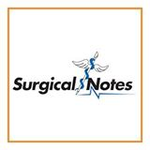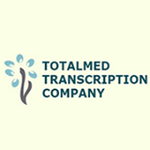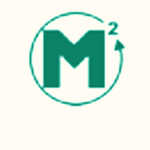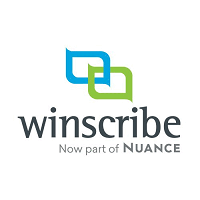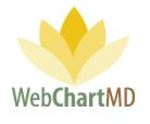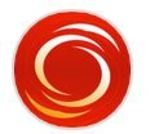What Is Medical Transcription Software?
Medical transcription software is a sort of software developed exclusively for the healthcare business. It is used to convert dictations from healthcare professionals (such as doctors, nurses, and other medical practitioners) into written text. This software is essential in the medical profession since it enables the correct and efficient processing of patient data and other key medical papers.
One of the most important advantages of medical transcription software is its ability to accurately translate spoken words into written text. This is accomplished through the use of powerful voice recognition technology, which analyzes and converts audio recordings to text format. This not only saves time and labor, but it also lowers the possibility of errors that could arise during manual transcription.
In addition to transcription, medical transcription software includes a variety of functions tailored to the healthcare industry's specialized requirements. This includes the capacity to link with electronic health record systems, which enables the seamless transmission of transcription data into patient records. It also includes formatting and editing tools for medical reports, such as templates and medical word dictionaries.
Furthermore, medical transcribing software frequently includes security features to preserve the confidentiality and safety of sensitive patient data. This includes safe data storage and transmission, as well as HIPAA-compliant features. When considering purchasing medical transcribing software, it is critical to select a recognized and dependable source with user-friendly and configurable choices. It is also critical to ensure that the software meets the specific requirements of your healthcare business, such as interoperability with existing electronic health record systems.
What Are The Recent Trends In Medical Transcription Software?
Medical transcribing software has advanced significantly in recent years, becoming more efficient, accurate, and user-friendly. These changes have been driven by the healthcare industry's increased desire for digitization, as well as the requirement for accurate and fast patient documentation. One of the most prominent recent advancements in medical transcribing software is the incorporation of artificial intelligence (AI) and machine learning (ML) technology.
These modern technologies are being used to automate and streamline the transcribing process, thereby lowering the time and effort required by human transcriptionists. AI and ML systems can also learn and adapt to different dictation styles, which improves accuracy and reduces errors in transcribed texts. Another new trend in medical transcription software is the use of speech recognition technology.
This enables clinicians to dictate their notes directly into the system, removing the need for human transcription entirely. Voice recognition technology is becoming more accurate and efficient, making it a popular alternative for healthcare organizations wishing to improve their documentation processes. The growth of cloud-based medical transcribing software is another important trend in recent years.
With the transition to electronic health records (EHRs), cloud-based software enables secure and convenient access to patient data from any place. This has substantially enhanced collaboration and communication amongst healthcare providers, resulting in better patient care. Data security is a major concern in the healthcare industry, hence there has been a focus on implementing stronger security features into medical transcribing software.
Encryption, user access controls, and regular backups are among the measures that protect sensitive patient data. Additionally, there has been an increased emphasis on developing mobile-friendly solutions for medical transcription software. With the proliferation of smartphones and tablets, healthcare personnel can now access and update patient records while on the road, increasing efficiency and productivity.
Benefits Of Using Medical Transcription Software
Medical transcription software is a useful tool for healthcare workers who want to optimize their transcription process and increase overall productivity. There are numerous advantages to employing this type of software, making it an indispensable investment for any modern healthcare facility.
We will look at the primary benefits of adopting medical transcribing software, allowing you to make an informed decision for your firm.
1. Accurate And Fast Transcriptions: One of the key benefits of using medical transcription software is the ability to generate accurate and timely transcriptions. This program uses modern technology and specific vocabulary to ensure that medical jargon and terms are transcribed correctly and with few errors. It also has auto-correct and built-in dictionaries, which help to increase accuracy. Furthermore, medical transcription software employs voice recognition technology, enabling quick and effective transcription of audio data.
2. Time And Cost Savings: Manual transcription can be a time-consuming and costly process in healthcare facilities. Medical transcribing software allows transcriptionists to accomplish their work more quickly, minimizing the time and effort required for the task. This program also reduces the need to hire many transcriptionists, resulting in lower labor expenses. It also minimizes the need for paper and storage space, which saves the organization even more money.
3. Enhanced Workflow And Productivity: Medical transcribing software enables efficient and organized workflow management, resulting in increased production for healthcare facilities. The program includes capabilities such as online document sharing and remote access, which allow for faster file transfers and increased collaboration among healthcare professionals. It also has templates and formatting choices, which help transcriptionists create uniform documents and improve workflow efficiency and productivity.
4. Improved Data Security And Compliance: Medical transcribing software securely stores and transfers sensitive patient information. This program adheres to strong security measures and industry laws, such as HIPAA, to ensure patient data is protected. It also includes encryption and password security to better protect confidential medical information.
5. Integration With Other Healthcare Systems: Medical transcription software can be integrated with other healthcare systems, such as electronic health records (EHRs) and practice management software, resulting in a streamlined workflow. This interface simplifies access to patient information, reduces the need for manual data entry, and ensures data consistency across systems.
Important Factors To Consider While Purchasing Medical Transcription Software?
In today's digital age, medical transcribing software has become an indispensable tool for healthcare professionals seeking to optimize their documentation processes. However, with so many options on the market, it can be difficult for consumers to choose the best software for their individual requirements.
To make an informed decision, here are some crucial considerations to consider when selecting medical transcribing software:
1. Accuracy: One of the most important considerations is the software's accuracy. Look for software that incorporates advanced speech recognition technology and has a high accuracy rate, preferably greater than 99%. This ensures that your transcriptions are free of errors and saves you time in the long run by eliminating the need for human revisions.
2. Compatibility: Make sure that the software you choose is compatible with your current EHR (electronic health record) system. This will enable smooth data integration and transfer between the two systems, removing the need for human data entry and reducing the chance of errors.
3. Security: Because healthcare practitioners handle sensitive patient information, security should be the top consideration when selecting medical transcribing software. Look for HIPAA-compliant software that has features such as encrypted data storage, secure login, and data backups to assure patient data security.
4. Usability: A user-friendly interface can significantly improve the efficiency and productivity of your practice. Look for software with an intuitive design and simple functionality to save you and your employees time and effort during the learning and training process.
5. Customization: Each practice has distinct demands and requirements, and medical transcribing software should be able to meet these needs. Look for software that allows you to customize it with templates, macros, and formatting options so that it meets the specific demands of your practice.
6. Support And Training: Before making a purchase, you should learn about the quality of support and training provided by the software supplier. Ensure that they provide comprehensive training to get your employees up to speed with the software and provide timely technical assistance in the event of any problems.
What Are The Key Features To Look For In Medical Transcription Software?
Medical transcription software is an invaluable tool in the healthcare business, allowing physicians to transcribe medical records and dictations more swiftly and precisely. With so many alternatives available, it might be difficult to select the best software for your needs.
When shopping for medical transcribing software, there are a few important things to consider.
1. Speech Recognition Technology: Look for software that uses advanced speech recognition technology to accurately transcribe audio files. This feature automatically transcribes spoken speech into text, saving time and reducing errors.
2. Language Capabilities: Medical terminology can be complicated, thus it is critical to select software that supports a wide range of medical specialties and has a vast medical vocabulary. Some software also supports many languages, which might be useful for healthcare providers with non-English speaking patients.
3. Adjustable Templates: Because each healthcare facility has its own distinct format and style for medical records, it is critical to choose software that supports adjustable templates. This tool can help save time and guarantee uniformity in medical records.
4. Compatibility: Make sure the software you choose is compatible with your existing computer systems and electronic medical record (EMR) software. This can help to streamline the transcription process and prevent technological complications.
5. Edit And Review Capabilities: Look for software that has simple editing and review capabilities, such as a spell-checker and a medical spelling database. These tools can assist detect faults or discrepancies in transcribed text.
6. HIPAA Compliance: As with any healthcare software, it is critical to select a system that complies with the Health Insurance Portability and Accountability Act (HIPAA). This maintains the security and confidentiality of medical records while also protecting against future legal difficulties.
7. Customer Assistance: Consider the software provider's level of customer assistance. Look for a provider that offers dependable and accessible technical support, as well as training and resources to help you get the most of the program. By carefully examining these crucial aspects, you can select the most appropriate medical transcription software for your requirements. Before making a final decision, make sure to read reviews, compare costs, and use any free samples or demos to check that the product suits your needs.
Why Do Businesses Need Medical Transcription Software?
The usage of medical transcribing software has become an essential component of running a profitable medical business. This software is a valuable tool for effectively transcribing medical documents such as patient records, consult notes, and discharge summaries.
Here, we will look at the top reasons why healthcare firms should invest in medical transcribing software.
1. Improved Accuracy And Productivity: Using medical transcribing software results in a considerable increase in accuracy and productivity. The software uses powerful voice recognition technology, which essentially eliminates the possibility of human error. This not only enhances transcript quality, but also saves time and resources for healthcare organizations.
2. Compliance With Industry Standards: The healthcare industry is heavily regulated, and organizations must adhere to strict standards while managing patient information. Medical transcription software is intended to meet these requirements, ensuring that sensitive medical information is safely kept and delivered. This not only helps businesses avoid penalties and legal ramifications, but it also fosters confidence among patients.
3. Simplified Workflow: Medical transcription software provides a simplified workflow, allowing healthcare organizations to efficiently manage the transcribing process. The software effortlessly integrates all phases, including dictation, formatting, editing, and completing. This saves businesses time and effort, allowing them to focus on providing high-quality treatment to patients.
4. Tailored To Different Medical Specialties: Each medical specialty has its own vocabulary and language. Medical transcription software provides customizable choices for a variety of specialties, including cardiology, radiology, and dermatology. This assures precise transcriptions and decreases the possibility of misinterpretation of medical words, which might have dangerous implications.
5. Cost-Effective Solution: Businesses may incur long-term costs when outsourcing medical transcription services. Using medical transcribing software eliminates the need for outsourcing while lowering overhead costs. As a one-time investment, this software can result in significant cost reductions for enterprises.
How Much Time Is Required To Implement Medical Transcription Software?
The time necessary to establish medical transcribing software varies based on the software and your practice's size and complexity. However, properly implementing the software and integrating it into your workflows can take anything between a few days and a few weeks.
Here are the main elements that can affect the implementation timeline:
1. Software Familiarity: If you and your personnel are already familiar with medical transcribing software, the time required to adopt it will be significantly reduced. If you're converting to a new software, it may take longer to train your employees and get everyone on board.
2. Customization And Configuration: Many medical transcribing software solutions have customization options to help you adjust the software to your individual practice requirements. Depending on the extent of modification required, this can extend the implementation time.
3. Data Migration: If you're moving from another transcription software or paper-based system, you'll need to transfer your data to the new program. This can take a long time, particularly if you have a big number of patient records.
4. Training: Set some time for training and familiarization with the software. This ensures that you and your staff are properly prepared to use the program efficiently and successfully.
5. Integration With Current Systems: If you already have software systems or electronic health records in place, it may take some time to effectively integrate the medical transcription software with them.
Overall, while the initial deployment of medical transcribing software may take some time, the benefits of improved workflows, efficiency, and patient care make it a worthwhile investment for any practice. Make sure to connect with your software provider and allow adequate time for a smooth and successful implementation.
What Is The Level Of Customization Available In Medical Transcription Software?
When it comes to medical transcribing software, personalization is a crucial consideration. This feature allows customers to customize the software to meet their individual requirements, making it more efficient and user-friendly. So, what level of customization should you expect from various medical transcribing software? Let us find out. First and foremost, it is critical to recognize that the extent of customisation differs from program to software.
Some may provide more advanced customization possibilities, while others may have a narrower selection. It is critical to conduct extensive study and analyze many possibilities to determine which one best meets your demands. One of the most popular customization options in medical transcribing software is the ability to build templates. This allows users to save frequently used phrases or terms, which saves time and effort during transcription.
Furthermore, templates can be tailored to certain specializations, making it easier to effectively transcribe medical information. Another key feature of medical transcribing software is the capacity to construct macros. Macros are a set of prepared commands that can be assigned to a key or a button to enable for the speedy completion of repetitive activities. This feature has the potential to dramatically boost efficiency while reducing the danger of errors.
Furthermore, certain software may allow users to change the user interface based on their preferences. This might include the option to rearrange toolbars, adjust font sizes, and customize keyboard shortcuts. It may seem like a minor feature, but a tailored user interface can significantly improve the entire user experience. Furthermore, specialized medical transcribing software may include the option to generate custom reports.
Users can create and save custom report templates for many sorts of medical reports, making it easier to generate accurate and consistent records. In addition to these features, some applications may allow you to alter the voice recognition engine for increased accuracy. This includes the option to insert medical terminology or acronyms that are regularly used in a given specialization.
Which Industries Can Benefit The Most From Medical Transcription Software?
Medical Transcription Software is an important tool for many sectors in the healthcare field. Its comprehensive features and capabilities can help medical documentation and transcribing procedures run more efficiently, accurately, and productively.
While the program is primarily intended for healthcare facilities and organizations, certain industries may benefit the most from it.
1. Hospitals And Clinics: Medical transcription software is most commonly used in hospitals and clinics. With a high volume of patients and a wide range of medical specialties, these facilities rely largely on accurate and fast transcription of medical records, such as patient histories, treatment plans, and laboratory findings. The program simplifies the documentation process, lowering the risk of errors and ensuring compliance with industry standards.
2. Pharmaceutical Companies: In the pharmaceutical sector, timely and accurate documentation is important to the success of clinical trials and product development. Medical transcription software can help with transcribing audio files from physician-patient contacts and focus group talks, providing insights into patients' reactions to new drugs or treatments. This data can help pharmaceutical companies make more educated judgments and enhance their medicines.
3. Insurance Firms: Insurance firms manage a large amount of medical data, such as claims, medical records, and bills. Medical transcription software can assist these organizations in digitizing and managing this data, making it conveniently searchable and accessible for claim processing and fraud detection. Automated transcriptions can also save time and resources required for manual data entry and verification.
4. Research Organizations: In the medical research field, precise documentation and data collection are critical. Medical transcription software can help you transcribe interviews with researchers, patients, and other medical professionals, resulting in a dependable database for future reference. Researchers can save time and costs by using the software's voice recognition and formatting capabilities.
5. Government Agencies: Medical Transcription Software can help government agencies in the healthcare industry, such as public health departments and regulatory authorities. These organizations manage a large volume of medical data and require precise transcriptions for research, policymaking, and auditing. The software can also assist these organizations maintain track of critical health statistics and trends.
Conclusion
In conclusion, selecting the best medical transcription software can be difficult, but it is critical for efficient and accurate medical documentation in any healthcare facility. After reviewing and comparing numerous possibilities, you should take into account your organization's demands and goals, as well as the software's features and capabilities.
Some important elements to consider while making your decision are ease of use, interoperability with your existing systems, security measures, and customer service. It is also crucial to weigh the cost of the program against the value and benefits it offers. It is strongly advised to obtain a demo or trial of the software before making a purchase, as well as seek feedback from current users and read reviews.
Taking the time to thoroughly research and compare options will guarantee that you get the best medical transcription software for your needs while also streamlining your medical documentation operations. With the appropriate software, you can boost efficiency, accuracy, and overall patient care in your healthcare facility.

